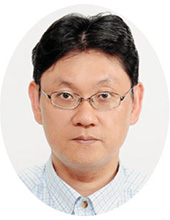
Seiji MIYOSHI

Yoshinobu KAJIKAWA


Active noise control, a technique for silencing with sound, is a typical example of successful adaptive signal processing. The FXLMS algorithm is a generalized version of the LMS algorithm considering the impulse response of the secondary path (the propagation path from the canceling loudspeaker to the error microphone). Surprisingly, despite the widespread use of the LMS and FXLMS algorithms for half a century, there is no general theory so far.
On the other hand, a framework for approaching various information-related problems using various theoretical analysis methods and numerical calculation methods developed in statistical mechanics, a branch of physics is known as statistical-mechanical informatics. It has achieved results in many fields such as associative memory models, error correcting codes, wireless communications, image processing, and statistical learning. The feature of statistical-mechanical informatics is to discuss universal properties that do not depend on the individual details of the problem macroscopically and deterministically by considering the limit of infinite system size.
In this paper, the dynamic and static behavior of the FXLMS algorithm is analyzed in the framework of statistical-mechanical informatics. That is, the main assumption is that the tap lengths of the primary path (unknown system) and the FIR adaptive filter are infinite. Simultaneous differential equations describing the dynamic behaviors of a few macroscopic variables are derived in a deterministic and closed form and are solved analytically. The results obtained are very accurate predictions of the results of computer experiments with finite tap lengths regardless of whether the reference signal is white or colored.
The results of this paper are not only very interesting from a theoretical point of view, but also useful in providing guidelines for determining various parameters when designing an actual active noise control system. For the above reasons, this paper can be highly evaluated as a paper worthy of this award.